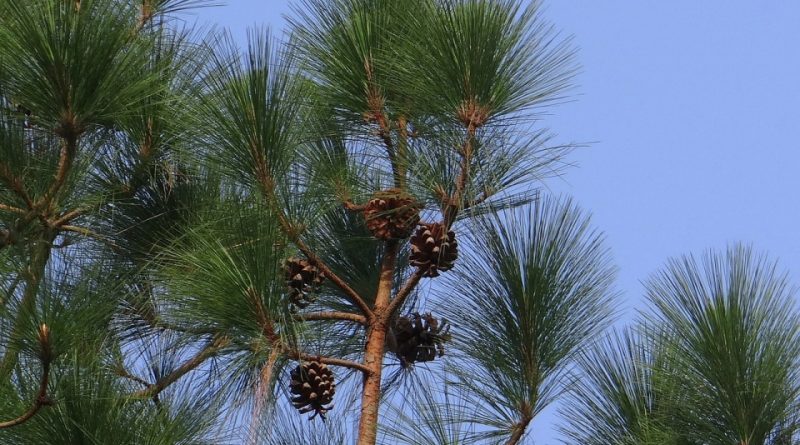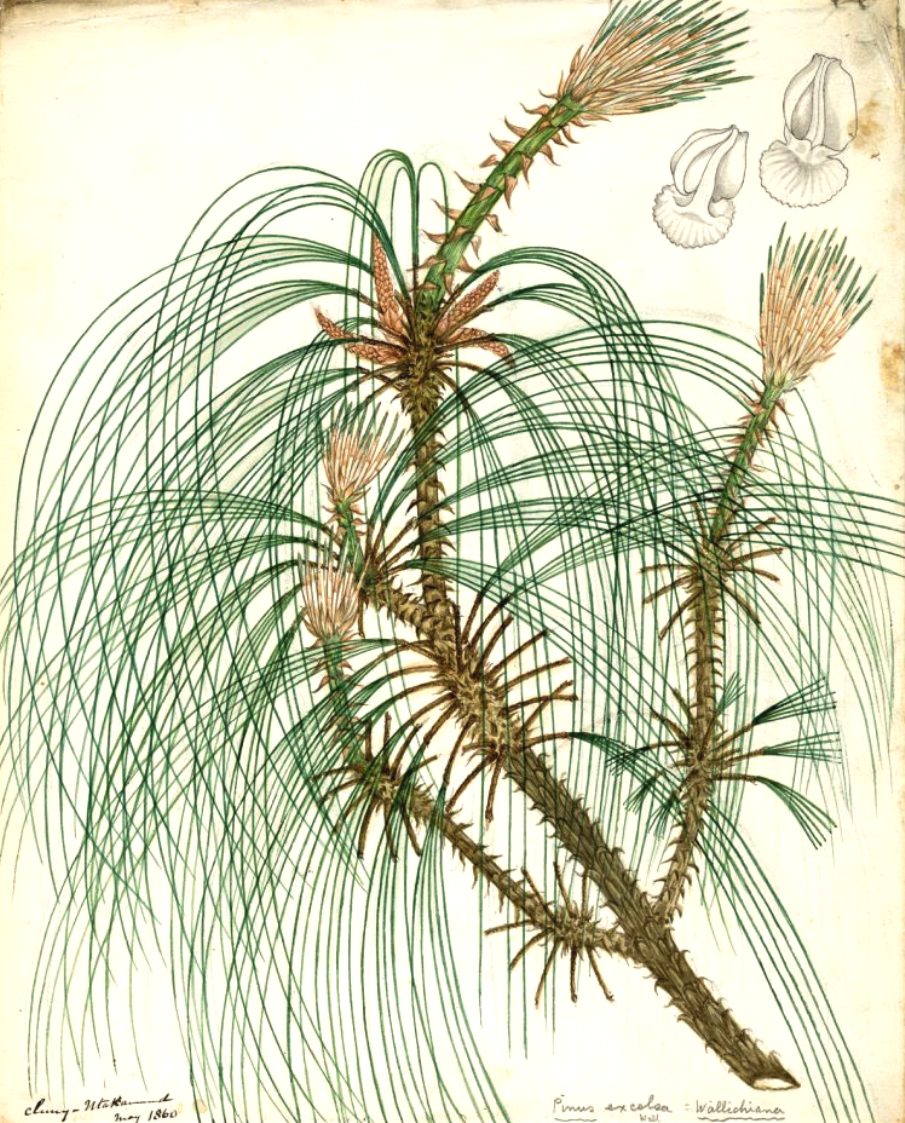Pinus wallichiana
Pinus wallichiana
The Pine of Wallich or Himalayan pine (Pinus wallichiana A.B.Jacks.) Is an arboreal species belonging to the Pinaceae family.
Systematics –
From a systematic point of view it belongs to the Domain Eukaryota, Kingdom Plantae, Subarranean Tracheobionta, Superdivisione Spermatophyta, Division Pinophyta, Class Pinopsida, Order Pinales, Family Pinaceae and then to the genus Pinus, to the subgenus Strobus and to the P. Wallichiana species.
The terms are synonyms: Pinus griffithii and Pinus excelsa.
Etymology –
The term Pinus comes from the Latin name of the pine tree, associated with the Sanskrit pítu resinous, cited by Pliny, Virgil and others. The specific Wallichian epithet is in honor of the Danish botanist Nathaniel Wallich (1786-1854) who worked for many years in India, in the Calcutta area where he was superintendent of the Botanical Garden, in Nepal, Burma and Malaysia; his original name was Nathan ben Wulff, son of Wulff ben Wallich.
Geographic Distribution and Habitat –
The Himalayan pine is native to the Himalayas and its habitat is typical of the high altitudes, up to 4500 m / asl, of the Himalayas, of the Karakorum, of Afghanistan and, through the north of Pakistan and India, up to at Yunnan. It was introduced in Europe in 1823, coming from Nepal.
Description –
The Pinus wallichiana is a tree that can grow up to 50 meters in height, with a triangular, not very dense, green-gray-silver foliage. The trunk is straight with bright gray rind when young, then opaque and cracked. The leaves are needles, 15-25 cm long and pendulous, collected in bundles of 5 guanoati at the base, green in color with white-greyish and glaucous shades. The young branches are smooth and gray-green or glaucous. The male cones are ovoid, yellowish, gathered in spikes that release the pollen in the period of June; the female cones are green-glaucous, cylindrical, supported by a long peduncle, long at maturation up to 30 cm light brown, pendulous and curved, very resinous; the cones have scales with large apophysis furrowed and terminating in obtuse umbons.
Cultivation –
The Pinus wallichiana is a plant that prefers fresh, humid, deep soils, in sunny locations and is well suited to mild climates and is widespread throughout Italy as an ornamental tree in parks and gardens, including those of many historic Roman villas. For its cultivation remember to plant it in the period between October and March taking care to irrigate the plant regularly especially during the first years of life, allowing the soil to dry between one irrigation and another. It is a plant, which due to its origins, has a good degree of resistance to cold. Moreover this plant should not be pruned, because otherwise it would be affected by permanent damage. The presence of fungi and the rotten roots are signs that indicate the stagnation of water; to avoid this, it is advisable to provide good drainage.
Uses and Traditions –
Pinus Wallichiana, in its places of origin, is one of the most important forest species for the local economy, as its hard and resistant wood is used in building and in the production of tea boxes. From the roots of this pine was extracted an oil, used in the East as a repellent against living pests in the rice fields.
Currently it is widespread in Europe for ornamental and landscape purposes because it is a tree suitable for living also as isolated individuals. It is appreciated as an ornamental plant for its elegant bearing favored by long falling needles and has also been used in reforestation.
Preparation Mode –
The Himalayan pine is not other particular uses of food or therapeutic nature.
Guido Bissanti
Sources
– Acta Plantarum – Flora of the Italian Regions.
– Wikipedia, the free encyclopedia.
– Treben M., 2000. Health from the Pharmacy of the Lord, Advice and experience with medicinal herbs, Ennsthaler Publisher
– Pignatti S., 1982. Flora of Italy, Edagricole, Bologna.
– Conti F., Abbate G., Alessandrini A., Blasi C. (edited by), 2005. An annotated checklist of the Italian vascular flora, Palombi Editore.
Warning: Pharmaceutical applications and alimurgical uses are indicated for informational purposes only and do not in any way represent a medical prescription; there is therefore no liability for their use for curative, aesthetic or food purposes.


